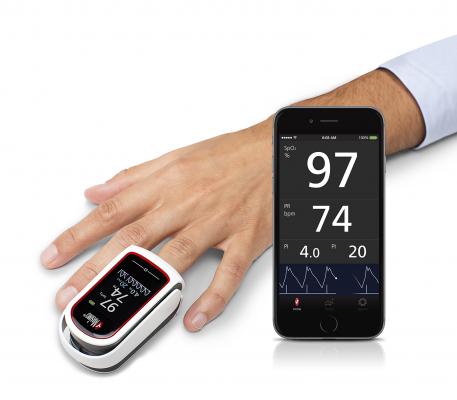
July 8, 2015 - Masimo announced the CE Mark and full market release of MightySat Rx fingertip pulse oximeter for clinical use in CE countries. The device uses Masimo's SET Measure-Through Motion and Low Perfusion pulse oximetry.
Bluetooth-enabled versions of MightySat Rx allow clinicians to track and trend up to 12 hours of patient measurements on smart mobile devices, and to share that data via standard CSV files as well as transfer to Apple's Health app.
MightySat Rx enables accurate noninvasive spot-checking of oxygen saturation (SpO2) and pulse rate (PR) for adult and pediatric patients even during motion and low perfusion. The device measures and displays perfusion index (PI), which reflects the strength of the pulsatile signal. MightySat can also measure and display Pleth Variability Index (PVI), a measure of the dynamic changes in the perfusion index that occur during one or more complete respiratory cycle/s.
MightySat Rx is available in three versions for patients who weigh more than 30 kg (66 lbs):
- MightySat Rx – Measures and displays SpO2, PR, and PI;
- MightySat Rx, Bluetooth – Adds Bluetooth LE radio for transfer of parameter data to Apple iOS and select Android mobile devices;
- MightySat Rx, Bluetooth and PVI.
Standard features include:
- Measure-Through Motion and Low Perfusion performance;
- Signal I.Q. to assess measurement confidence;
- Rugged, lightweight design for operation in challenging environments;
- Long battery life – up to 15 hours with two standard AAA alkaline batteries; and
- Comfortable design with silicon finger pad to mold to patients' fingers.
For more information: www.masimo.com


 June 16, 2025
June 16, 2025 









